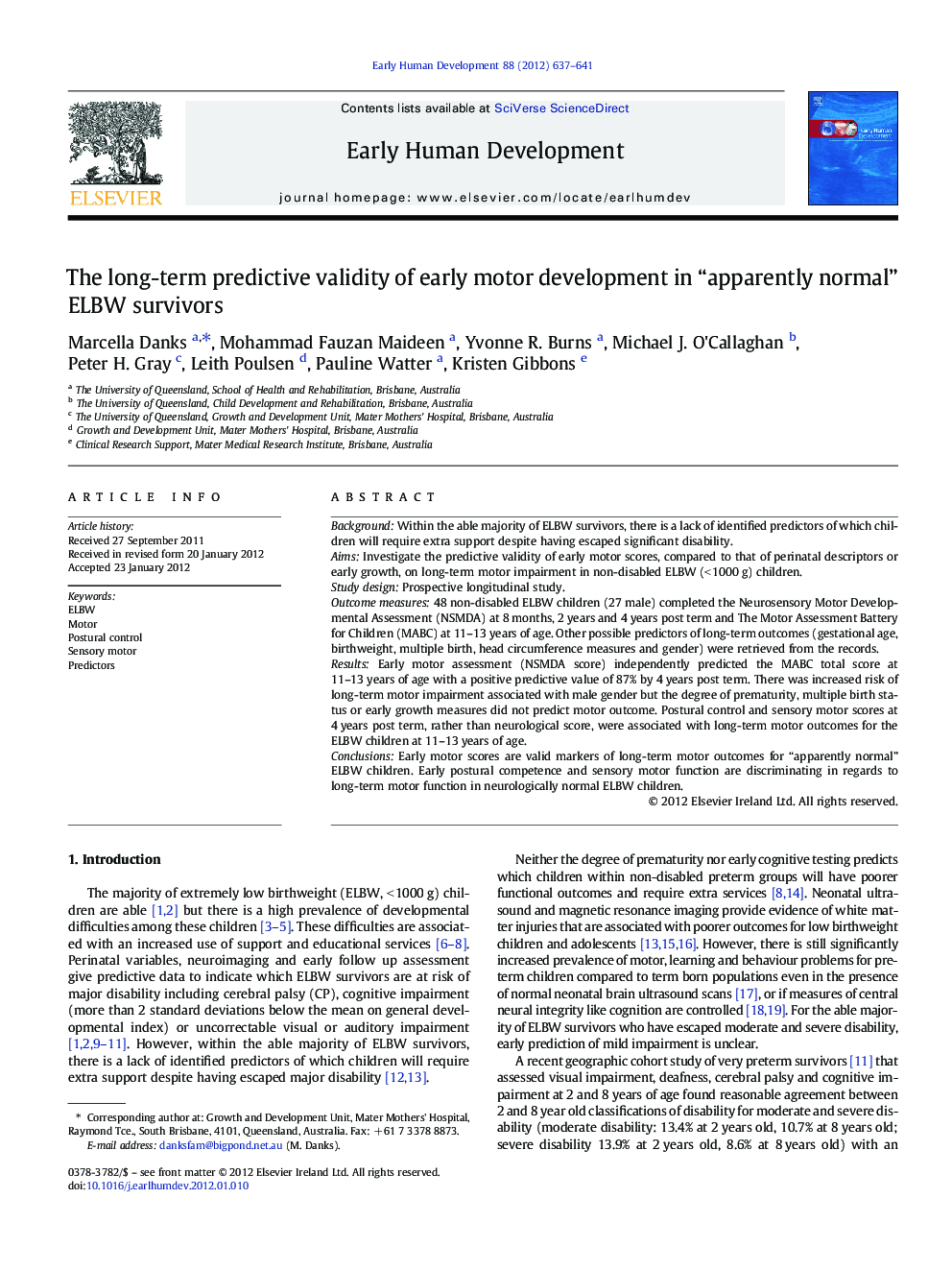| Article ID | Journal | Published Year | Pages | File Type |
|---|---|---|---|---|
| 3916851 | Early Human Development | 2012 | 5 Pages |
BackgroundWithin the able majority of ELBW survivors, there is a lack of identified predictors of which children will require extra support despite having escaped significant disability.AimsInvestigate the predictive validity of early motor scores, compared to that of perinatal descriptors or early growth, on long-term motor impairment in non-disabled ELBW (< 1000 g) children.Study designProspective longitudinal study.Outcome measures48 non-disabled ELBW children (27 male) completed the Neurosensory Motor Developmental Assessment (NSMDA) at 8 months, 2 years and 4 years post term and The Motor Assessment Battery for Children (MABC) at 11–13 years of age. Other possible predictors of long-term outcomes (gestational age, birthweight, multiple birth, head circumference measures and gender) were retrieved from the records.ResultsEarly motor assessment (NSMDA score) independently predicted the MABC total score at 11–13 years of age with a positive predictive value of 87% by 4 years post term. There was increased risk of long-term motor impairment associated with male gender but the degree of prematurity, multiple birth status or early growth measures did not predict motor outcome. Postural control and sensory motor scores at 4 years post term, rather than neurological score, were associated with long-term motor outcomes for the ELBW children at 11–13 years of age.ConclusionsEarly motor scores are valid markers of long-term motor outcomes for “apparently normal” ELBW children. Early postural competence and sensory motor function are discriminating in regards to long-term motor function in neurologically normal ELBW children.
